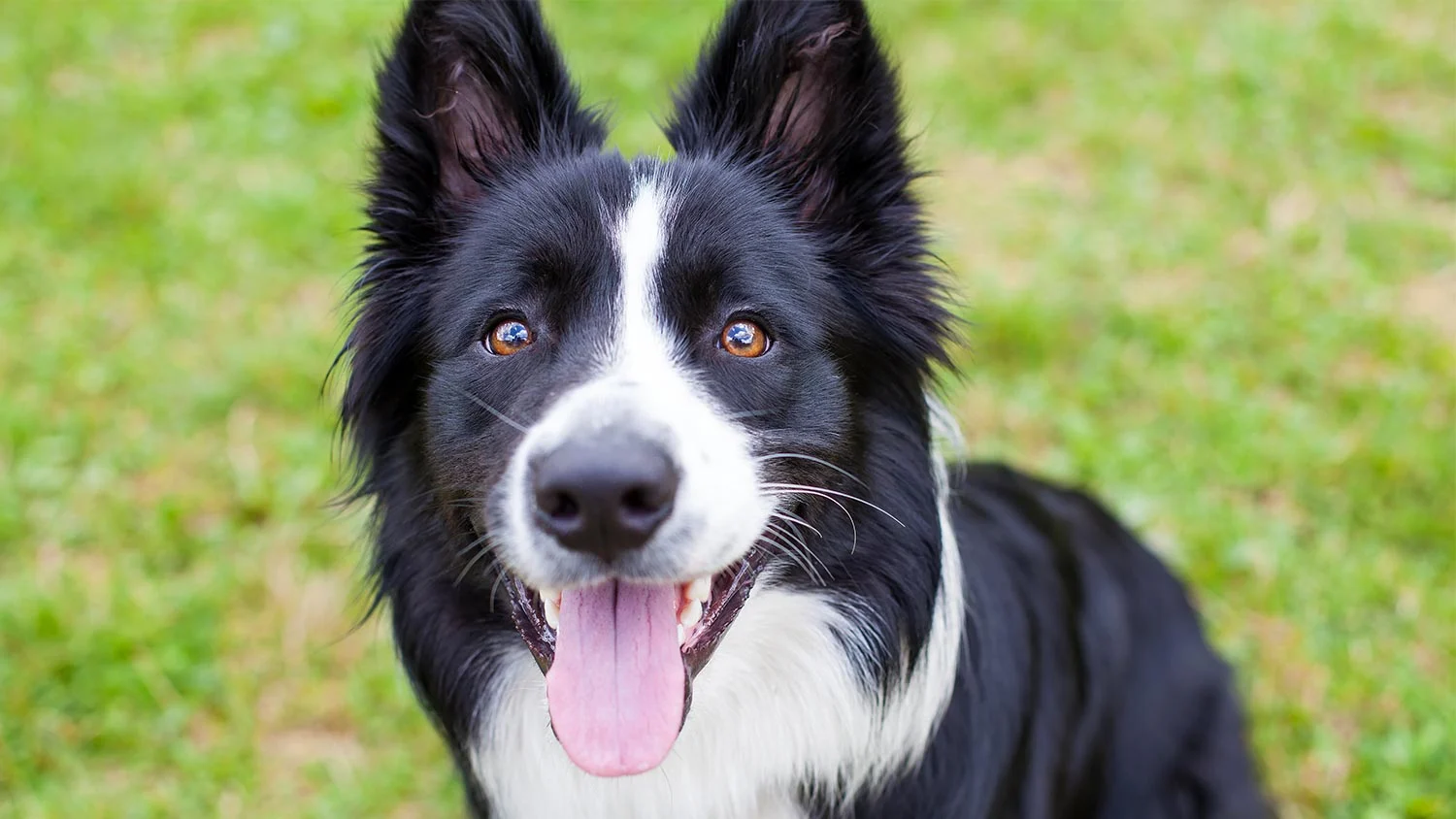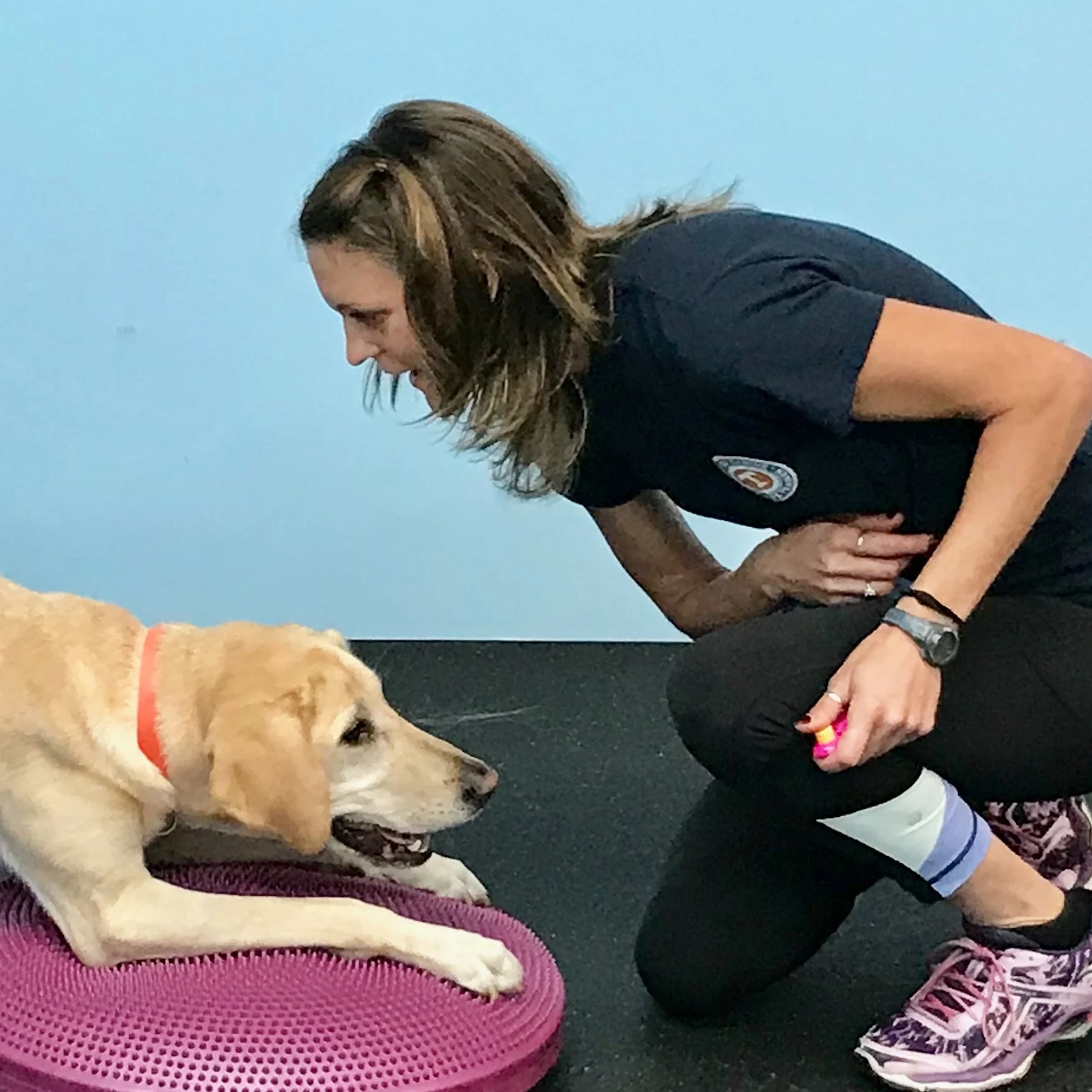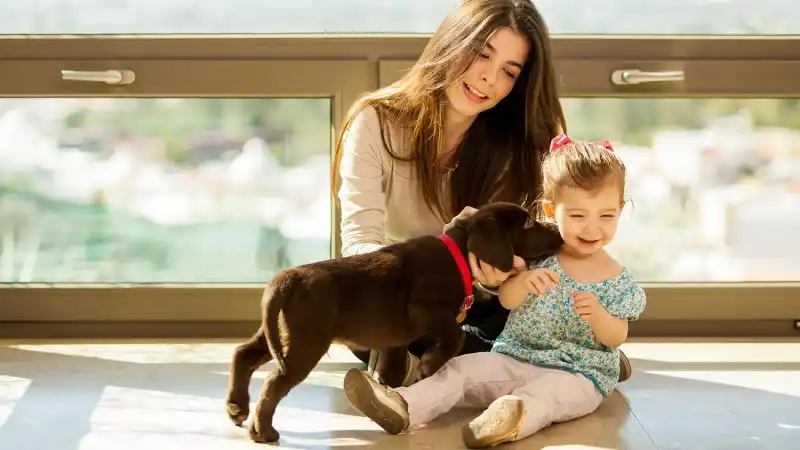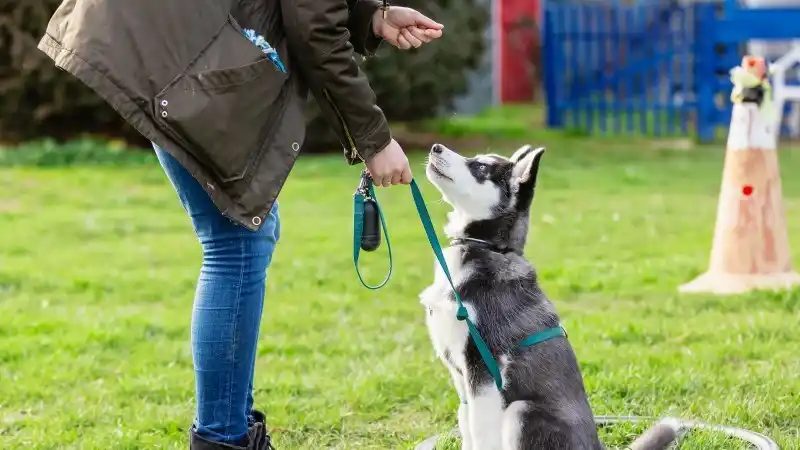KLIMB™: Platform Training With Your Dog
Training your dog can be a great way to build your relationship and strengthen your pup's body. Learn how to use platforms to shake up your training routine!

Did you catch the fitness training bug? Oh, no, it’s not the actual influenza – it’s just the desire to learn, play with and train your dog! Well-intentioned, enthusiastic owners sometimes buy new equipment for their dogs and need some extra tips to use the gear and to think of beneficial choreography. If you own a KLIMB™ or have another platform – such as an aerobic step bench, x-large foam pad, agility pause table, or rocker board that you can stabilize safely (to not rock as much) on Paw Pods – try some of the below exercises to perk your pup’s physical awareness and to engage him mentally.
Flat or Four-legged
On a flat KLIMB (without the legs attached) or a KLIMB that has its four legs attached, your dog can:
Do position changes: sit, down, fold-back down, and stand. Position changes require your dog to balance as the KLIMB is less stable than the floor and your dog must focus to ensure he stays upright when elevated. Those position changes activate his shoulders, hips, and core.
Learn a tuck sit. The tucksit is the position in which his front limbs stay planted and he brings his back legs forward to end in a sit position.
Some dogs like to learn the tuck sit by going “downhill.” The front limbs start on the floor and the hind limbs are on the platform – the dogs move their hind limbs to the floor, keeps their forelimbs glued to the floor, and ends in a sit position entirely on the floor.
Other dogs absorb the tuck sit concept by going “uphill.” The dogs start with their forelimbs on the platform and move their back feet from the floor onto the platform – the dogs end sitting on the platform.
For both variations, be sure there is enough space behind the dog’s forelimbs for the dog to end in a sit position! You’ll know you are on the right track when you see his shoulders shift weight forward past his wrists – that will happen right before he launches his hind limbs forward. You can encourage your dog to keep those front feet in place by using a treat in front of his nose – he won’t want to move his nose back away from the treat to do a traditional rock-back sit, in which he uses gravity, just plops his hind end on the floor, and then scoots his forelimbs toward his rear to sit.
Perform other tricks, such as bow, circles, chin, nose touch, and give a paw. It’s harder for humans in exercise classes to balance and to perform weight lifting movements on a step bench or aerobic platform – doing these skills on the KLIMB will further challenge your pup, too! These movements further polish proprioception and build strength as he uses his core to stay balanced.
Use it as a place for station. Your dog goes to the platform to relax in a down position until you release him -similar to the “go to your mat” cue. This is great if you have multiple dogs and want to train another dog without having to put the first dog in a different room or in a crate. Further, you can even have your dog station up on the KLIMB when you want to vacuum or mop.
Be groomed and manicured (a nail trimming location). Having your dog elevated will create less strain on your back! Ensure your sessions are positive so your dog associates both the platform and the hygiene help with awesome things, like yummy, special treats.
If your dog is too big to do some of the movements on just one KLIMB™, you can do the drills on a non-slippery floor, a yoga mat, a long step bench, or two interlocked KLIMBs. KLIMBs actually connect together via a side notch!
Flip It!
For more advanced techniques, flip your KLIMB upside down with the legs attached. First, have your dog sit, stand, do a circle, and sit again. Then repeat the sequence doing the circle in the opposite direction. The table legs act as a spatial “barrier” to encourage your dog to do a tight, controlled circle.
If your dog is too large to do a circle on the flipped KLIMB, you can do this on the floor or on a long step bench. You can use four soccer cones or tall rain boots as the “guide” for your dog’s circle to inspire tight turning!
Want to progress? For small to medium dogs, place a large 22 inflatable disc on top of the table and between the legs. Now have your dog do the sit-right circle-sit-left circle-sit drill on this unstable surface or “give a front paw” while sitting!
Two-legged
You can also use the KLIMB on an incline by only attaching two of the table legs side-by-side. If you are not using a KLIMB, use a lower-to-the-ground substitute. You can do:
Front and hind limb targeting.
For front limb targeting, your dog places his front limbs on the KLIMB (or other platform) and shifts weight into his rear limbs. This shift to the hind end encourages strength in the rear.
For hind limb targeting, your dog places his hind limbs on the platform and shifts more weight into his forelimbs, creating more forelimb muscle.
Squat-stands. You might want to find a Certified Canine Fitness Trainer coach to help do this one properly. Your dog starts in a front limb targeting position with his front limbs on the inclined KLIMB and his hind limbs on the ground. Your dog keeps his front paws on the KLIMB during the entire squat. To squat, he bends his back legs so that his bottom almost hits the floor – he then uses power to push back into a stand from the squat! This is similar to your doing squats in your exercise class. Squats are very challenging and good form is key.
For these two-legged KLIMB exercises, the downward-slanting, lowest side of the KLIMB is between the dog’s hind limbs and forelimbs (under his stomach). If the two-legged KLIMB is too challenging, remove the legs and use the leg-less KLIMB. Just as you can adjust human exercises, you also modify canine exercises based on the needs and level of the dog.
Pairing Equipment
The ability to pair fitness equipment together significantly multiplies the fun level and the challenges! Two favorites are:
Creating a tunnel to use for forward crawling! Crawling is an excellent way to work and warm up the full body. Shorter dogs, such as corgis, are often lucky enough to be able to crawl under a four-legged KLIMB (all legs attached). Other dogs may need you to set up two KLIMBs or platforms a few feet apart and to place cavaletti poles or sofa cushions on top – your dog will then crawl between the two KLIMBs and under the poles or cushions. No poles? No problem. Use golf clubs or mop/broom handles! Encourage your dog to crawl through the gap by getting down to his level and calling him through the other side – when he reaches you, he gets a treat!
Using two platforms with a small gap. Start with a two-inch gap between two platforms. This could be two KLIMBs without the legs, two foam pads on the floor, or a different platform combination. You want the platform roughly the same height. With the forelimbs on one platform and the hindlimbs on the second platform, have your hound do stands-to-downs or stands-to-tuck sits over the little gap.
The combinations of fitness equipment pairings are almost endless. To find classes near you or to learn more about how to safely use your equipment and how to do beneficial calisthenic choreography for your dog, find a Certified Canine Fitness Trainer (CCFT). A CCFT can guide you in program design and in the proper number of repetitions and sets per exercise.
Besides being a blast, doing canine fitness helps keep your dog at an appropriate weight and physically fit. Doing fitness exercises with proper form can help prevent injuries and ensure your pup recuperates faster when he does get injured. Just as humans check with their doctors before engaging in new fitness routines, dog owners should check with their veterinarians before proceeding. If you ever see any changes in your dog’s health or notice any discomfort, stop the activity and contact your veterinarian.

Jasey Day holds the Certified Canine Fitness Trainer (CCFT) credential through the University of Tennessee. She is a member of the Bobbie Lyons K9FITteam - a team of compassionate canine fitness instructors who actively teach others and continually expand their own knowledge. Since 2004, Jasey has taught a variety of workshops and classes on the following: Puppy, Canine Good Citizen/Family Pet, Advanced Family Pet, Canine Fitness, Canine Swimming, Rally, and Agility. In addition, Jasey has earned over 60 titles in Dock Diving, Agility, Rally, CGC and Trick Dog. Jasey has worked full time for the American Kennel Club since 2007 and teaches at Care First Animal Hospital in Raleigh, NC. Jasey’s Labrador Retrievers spend their free time hiking, training, and snuggling with Jasey.
READ MORE ARTICLES

